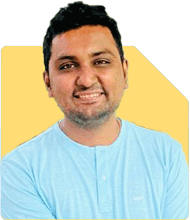JEE 2025 Form for PCB Student with Additional Maths: Passed or Appearing?
Radheshyam Zanwar |6445 Answers |Ask -Follow
MHT-CET, IIT-JEE, NEET-UG Expert - Answered on Sep 30, 2024
Based in Aurangabad, Maharashtra, it provides coaching for Class 10 and Class 12 students as well.
Since the last 25 years, Radheshyam has been teaching mathematics to Class 11 and Class 12 students and coaching them for engineering and medical entrance examinations.
Radheshyam completed his civil engineering from the Government Engineering College in Aurangabad.... more

Hello sir I’m pcb student and passed 12 th in 2024but will be giving maths as a additional student so while filling the form of jee 2025 what should i fill passed or appearing and if passed then how will i submit my maths marks
You must fill in "Appearing" in the application form for JEE (Main) 2025 examination.
You can submit the mark memo at the time of counseling process.
If you are dissatisfied with the reply, please ask again without hesitation.
If satisfied, please like and follow me.
Thanks.
Radheshyam
You may like to see similar questions and answers below
Radheshyam Zanwar |6445 Answers |Ask -Follow
MHT-CET, IIT-JEE, NEET-UG Expert - Answered on Sep 28, 2024
Abhishek Shah |77 Answers |Ask -Follow
HR Expert - Answered on Aug 19, 2025
Dr Nagarajan J S K |2327 Answers |Ask -Follow
NEET, Medical, Pharmacy Careers - Answered on Aug 19, 2025
Dr Nagarajan J S K |2327 Answers |Ask -Follow
NEET, Medical, Pharmacy Careers - Answered on Aug 19, 2025
Dr Nagarajan J S K |2327 Answers |Ask -Follow
NEET, Medical, Pharmacy Careers - Answered on Aug 19, 2025
Dr Nagarajan J S K |2327 Answers |Ask -Follow
NEET, Medical, Pharmacy Careers - Answered on Aug 19, 2025
Dr Nagarajan J S K |2327 Answers |Ask -Follow
NEET, Medical, Pharmacy Careers - Answered on Aug 19, 2025
Dr Nagarajan J S K |2327 Answers |Ask -Follow
NEET, Medical, Pharmacy Careers - Answered on Aug 19, 2025
Dr Nagarajan J S K |2327 Answers |Ask -Follow
NEET, Medical, Pharmacy Careers - Answered on Aug 19, 2025
Dr Nagarajan J S K |2327 Answers |Ask -Follow
NEET, Medical, Pharmacy Careers - Answered on Aug 19, 2025
Dr Nagarajan J S K |2327 Answers |Ask -Follow
NEET, Medical, Pharmacy Careers - Answered on Aug 19, 2025
















